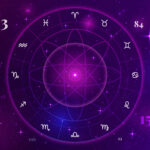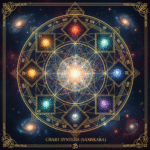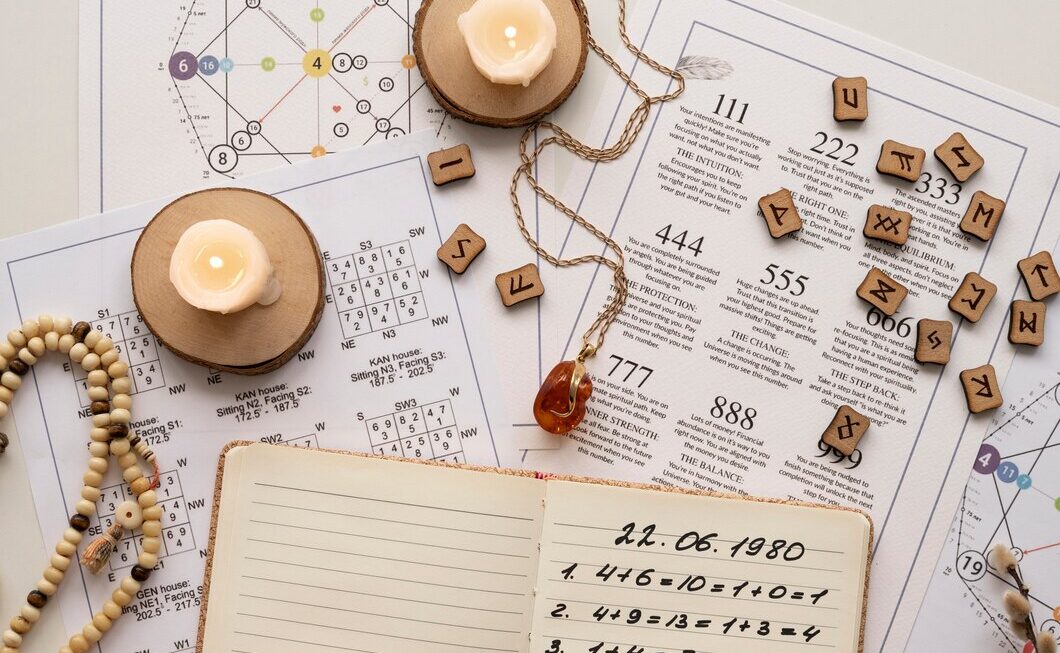In the intricate tapestry of the 36-point matching system, known as Ashtakoot Milan, each Koota represents a distinct layer of compatibility. Having examined Varna (1 point for spiritual purpose) and Vashya (2 points for psychological attraction), we now arrive at a factor of significantly increased weight: Tara Kuta.
Carrying a crucial 3 points (Gunas), Tara Koota delves into the realm of shared destiny, luck, health, and mutual well-being. Tara ($\text{तारा}$) literally translates to ‘star’ or ‘luminary.’ In the context of Vedic astrology, it refers to the Nakshatra (or Birth Star), the specific lunar mansion the Moon occupied at the time of an individual’s birth.
The analysis of Tara Kuta determines the inherent Nakshatra compatibility between two partners. It is a profound test of whether their individual destinies—their fundamental cosmic blueprints—are supportive or destructive to one another over a lifetime. A favorable score in Tara matching suggests that the couple will mutually enhance each other’s fortune, health, and longevity, making this a pivotal step in the holistic kundli matching system analysis.
As a senior content writer specializing in the subtleties of Jyotish, I will provide a comprehensive, 1500+ word exposition on the mechanism of Tara Koota, the profound significance of the 9 Taras, and how this birth star compatibility factor acts as a cosmic thread weaving two lives together.
The Mechanism of Tara Koota: The 9-Fold Division
To understand Tara matching, one must first understand the fundamental concept of the 27 Nakshatras—the lunar mansions. The Moon traverses these 27 divisions, and the specific Nakshatra a person is born under determines their foundational psychological and energetic disposition.
The Nine Taras (Navatara Chakra)
The calculation for Tara Koota is based on the Navatara Chakra (Nine Star Wheel). This system is created by counting the partner’s birth Nakshatra from the native’s own birth Nakshatra, and then dividing the total count by 9. The remainder corresponds to one of the nine Taras, each holding a specific meaning regarding the relationship’s effect on the individual.
The nine results are:
| Remainder | Sanskrit Name | English Meaning | Result on Native’s Life | Auspiciousness |
| 1 | Janma (जन्म) | Birth Star | Issues related to self, body, and status. | Inauspicious |
| 2 | Sampat (संपत) | Wealth/Resources | Financial gain, prosperity, and abundance. | Auspicious |
| 3 | Vipat (विपत) | Danger/Calamity | Losses, accidents, or sudden difficulties. | Highly Inauspicious |
| 4 | Kshema (क्षेम) | Safety/Welfare | Security, protection, and general happiness. | Auspicious |
| 5 | Pratyak (प्रत्यक्) | Obstacle/Return | Hurdles, resistance, and delays. | Inauspicious |
| 6 | Sadhaka (साधक) | Accomplishment | Success, realization of goals, fulfillment. | Auspicious |
| 7 | Vadaha (वध) | Destruction/Fatal | Severe detriment, physical or energetic harm. | Highly Inauspicious |
| 8 | Mitra (मित्र) | Friend | Friendship, harmony, and mutual support. | Auspicious |
| 9 | Ati-Mitra (अति-मित्र) | Great Friend | Deep kinship, profound support, and intimacy. | Auspicious |
The 3-Point Scoring Rule
The Tara Kuta score of 3 points is awarded based on the collective result for both partners:
- 3 Points (Full Match): Achieved when both partners’ Nakshatras fall into one of the highly auspicious categories (2, 4, 6, 8, 9) relative to the other.
- 1.5 Points (Half Match): Achieved when one partner falls into an auspicious category, and the other falls into a neutral or less desirable category (e.g., Janma, Pratyak).
- 0 Points (No Match): Achieved if either partner’s Nakshatra falls into the highly inauspicious categories of Vipat (3) or Vadaha (7) relative to the other. These are severe Doshas that are traditionally seen as powerful detriments to the marital harmony and the health of the partners.
The Crux: The nakshatra kuta is less about personality traits and more about the karmic interaction of the couple’s underlying life currents. It asks: Is your presence in my life destined to bring me fortune, or harm?
The OREO Analysis: Tara Koota and Mutual Destiny
In the 36-point matching system, Tara is the first major factor (after Nadi, Bhakoot, and Gana) to deal with fortune and fate, giving it 3 points of influence. Its primary relevance today is as a predictor of how the relationship will impact the overall life course of the individuals.
Opinion: Tara Koota is the Vedic Barometer for Mutual Fortune and Protection
Opinion: The Tara Koota system is a profound indicator of how two people’s individual destinies interlock, serving as a Vedic barometer for mutual fortune, protection, and the avoidance of shared adversity.
Reason: The Significance of Karmic Interference
Reason: The nakshatra compatibility goes beyond psychological alignment (Varna, Vashya). It tests whether the entry of one partner into the other’s life will trigger positive or negative karmic consequences. If a pairing results in a Vipat Tara (Calamity) for one partner, the classical interpretation suggests that the relationship itself may become the channel through which that individual experiences loss, injury, or misfortune. Since destiny and well-being are foundational to a successful life, this factor must carry a heavier weight than mere personality alignment. The 3 points signify its direct impact on health and material security.
Example: The Shadow of Vipat and Vadaha
Consider a couple where the man’s Nakshatra falls into the Vipat Tara (3rd) when counted from the woman’s, resulting in 0 points for Tara matching. The traditional astrologer would advise caution, noting that the woman’s presence in his life might coincide with periods of unexpected loss, accidents, or financial setbacks for him. This does not mean the woman is inherently ‘bad’ for him; rather, their birth star compatibility is such that their combined energy field attracts mutual difficulty. A modern couple facing this 0-point score must commit to radical self-care, mutual protection, and extreme caution during periods of stress, understanding that the relationship’s shared destiny is prone to sudden, unexpected challenges.
Restatement: A Warning Label for Life’s Journey
Therefore, a low Tara Kuta score should be seen not as an end to the union, but as a severe warning label for the couple’s shared journey. It necessitates a proactive approach to spirituality, health, and mutual protection. A good score of 3 points is a genuine astrological blessing, suggesting the partners are destined to be a shield of fortune for one another.
The Probing Depth of the 9 Taras
To truly appreciate the 3 points awarded to Tara Koota, one must grasp the cyclical nature of the 9 Taras, which repeat throughout life as a predictive tool (Dasha System). In nakshatra kuta analysis, we are identifying which phase of life the partner represents:
1. The Taras of Adversity (Janma, Vipat, Pratyak, Vadaha)
These four Taras, scoring 0 or 1.5 points, are the most crucial to avoid. They speak to the relationship becoming a source of stress:
- Vipat (3rd): The most feared, indicating sudden and calamitous events.
- Vadaha (7th): Represents active opposition and destruction, often through health issues or deep animosity.
- Pratyak (5th): Signifies obstacles and constant struggle. The relationship always seems to be uphill.
- Janma (1st): While not always destructive, it signifies self-centeredness and potential issues with the partner’s status or body, often causing emotional friction.
If the Tara matching lands strongly on one of these, the couple must actively seek astrological remedies and commit to deep, stabilizing spiritual practices to neutralize the negative cosmic current.
2. The Taras of Support (Sampat, Kshema, Sadhaka, Mitra, Ati-Mitra)
These five Taras are where the full 3 points are earned and represent the supportive force fields in the relationship:
- Sampat (2nd) & Sadhaka (6th): These are wealth and success-oriented. The partner’s arrival helps you realize your goals and increase your material well-being.
- Mitra (8th) & Ati-Mitra (9th): These are relationship and harmony-focused. They ensure deep emotional understanding, friendship, and profound kinship, which are invaluable for navigating life’s inevitable ups and downs.
- Kshema (4th): This is the star of safety and security. The relationship acts as a stable, comforting haven, protecting both partners from external threats.
A strong Tara Koota score means the couple will find that when one person faces a crisis, the other’s destiny provides the necessary shield or resource to overcome it, demonstrating true birth star compatibility.
Why 3 Points? The Weight of Health and Longevity
In the ancient worldview, the longevity and health of the partners were paramount, as these directly impacted the continuation of the family line and the pursuit of Dharma. Tara Koota is the first Koota to primarily signal these vital issues.
- Varna (1 point) is philosophical.
- Vashya (2 points) is psychological.
- Tara (3 points) is karmic and physical.
The weight of 3 points is justified because without stability in health and general fortune, a marriage, no matter how loving, cannot sustain itself. The Tara matching analysis is a quick, potent diagnostic test for this essential stability.
Conclusion: Weaving Two Destinies Together
The Tara Koota (3 points) is a powerful, destiny-driven component of the Ashtakoot Milan system. It is a meticulous analysis of Nakshatra compatibility that moves beyond personality clashes to evaluate the spiritual safety and mutual well-being two individuals can expect to share.
The wisdom of Tara matching is clear: while love and effort can overcome many psychological challenges, mitigating negative destiny requires heightened awareness. A high score in nakshatra kuta is a green light for a supportive and fortunate life together. A zero score, particularly due to the Vipat or Vadaha Taras, is not a prohibition, but a mandate for vigilance, conscious action, and deliberate spiritual fortification.
By understanding that your partner is not merely a person, but a powerful celestial energy aligning with your own, you transform the Tara Kuta from a score into a sacred guide for navigating your shared destiny, ensuring your two stars shine brighter, and longer, together.











